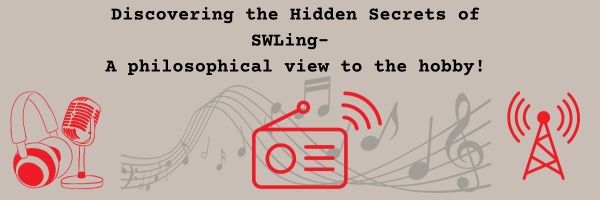
Shortwave radio listening, or SWLing, is a unique hobby that holds a special allure for enthusiasts. It’s a bit like finding hidden treasures in a vast, mysterious landscape, akin to discovering Easter eggs in video games. The enjoyment of SWLing stems from uncovering something that has always been there, waiting to be found, yet often overlooked or dismissed.
If you’re a dedicated shortwave radio enthusiast, you know that a significant part of the enjoyment comes from DXing. DXing, or long-distance listening, is the practice of tuning into distant radio stations, often from other countries or continents. It’s the equivalent of embarking on a grand adventure, where the reward is the joy of discovering elusive signals amidst the cacophony of static and interference. However, DXing is just the tip of the iceberg when it comes to maximizing your SWLing experience. Here, we explore additional tips to help you get the best out of your shortwave radio journey.
- Understand the Basics: The 25-30-20-25 Rule
To fully appreciate the magic of shortwave radio, it’s essential to grasp the fundamentals. SWLing is not just about the radio itself; it’s a synergy of factors that contribute to the overall experience. Imagine it like this: 25% of the magic lies in the radio you use, 30% is in your outdoor antenna setup, 20% depends on your knowledge of the right time and frequencies for listening, and the remaining 25% revolves around your location. For optimal results, invest in a good radio, set up an efficient antenna, master the art of timing, and seek out quiet places for listening.
- Dive into the Metaphorical World of SWLing
There’s a beautiful metaphorical world that can be associated with SWLing, allowing you to look beyond the surface and appreciate the deeper meaning of this hobby. Consider some of these associations:
Tuning into Enjoyable Frequencies: Just as in SWLing, in life, you can choose to tune into the enjoyable frequencies. Identify the things that bring you joy, fulfillment, satisfaction, and make a conscious effort to incorporate them into your daily routine.
Reducing Noise and Adjusting the Tuning: Life often presents noise in the form of irritations, annoyances, and distractions. Like adjusting the tuning on your radio, you can reduce this noise by addressing these irritations and finding ways to enhance your comfort and enjoyment.
The Tuning Is Off: Sometimes, the outcomes in life may not align with your desired goals. Just as in SWLing, where the tuning can be slightly off, in life, you may need to recalibrate your efforts and strategies to get closer to your desired outcomes.
Incorporating these metaphorical perspectives into your SWLing experience can add depth and meaning to your hobby, helping you draw parallels between the art of listening to shortwave radio and the art of living a fulfilling life.
SWLing is a journey of exploration, both in terms of uncovering hidden radio signals and discovering the subtle, metaphorical messages it holds for our lives. By understanding the 25-30-20-25 rule, investing in quality equipment, and embracing the metaphorical aspects, you can truly unlock the magic of shortwave radio and enjoy the profound rewards it offers. So, keep tuning in, and let the hidden secrets of the shortwave world continue to captivate your imagination and enrich your life.
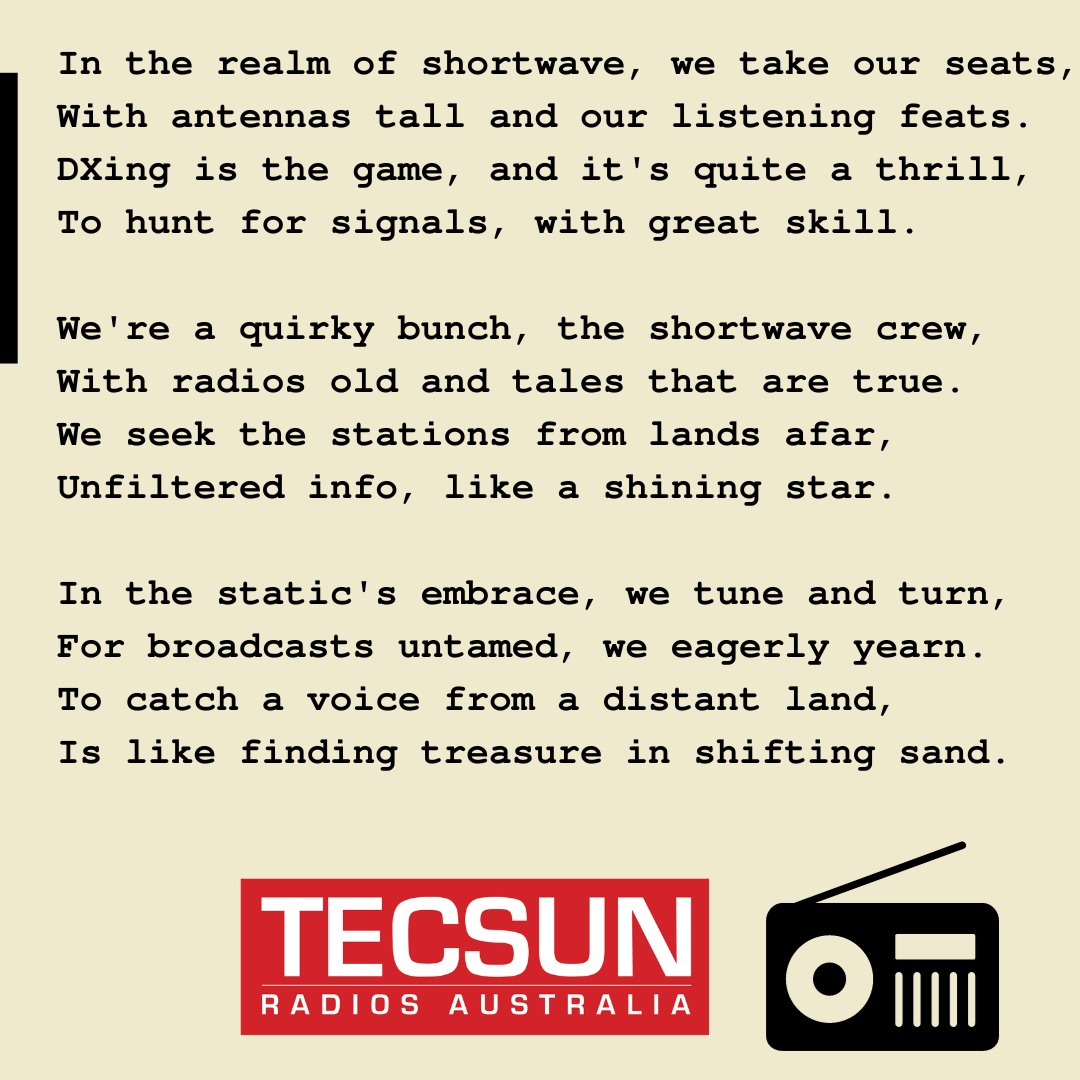
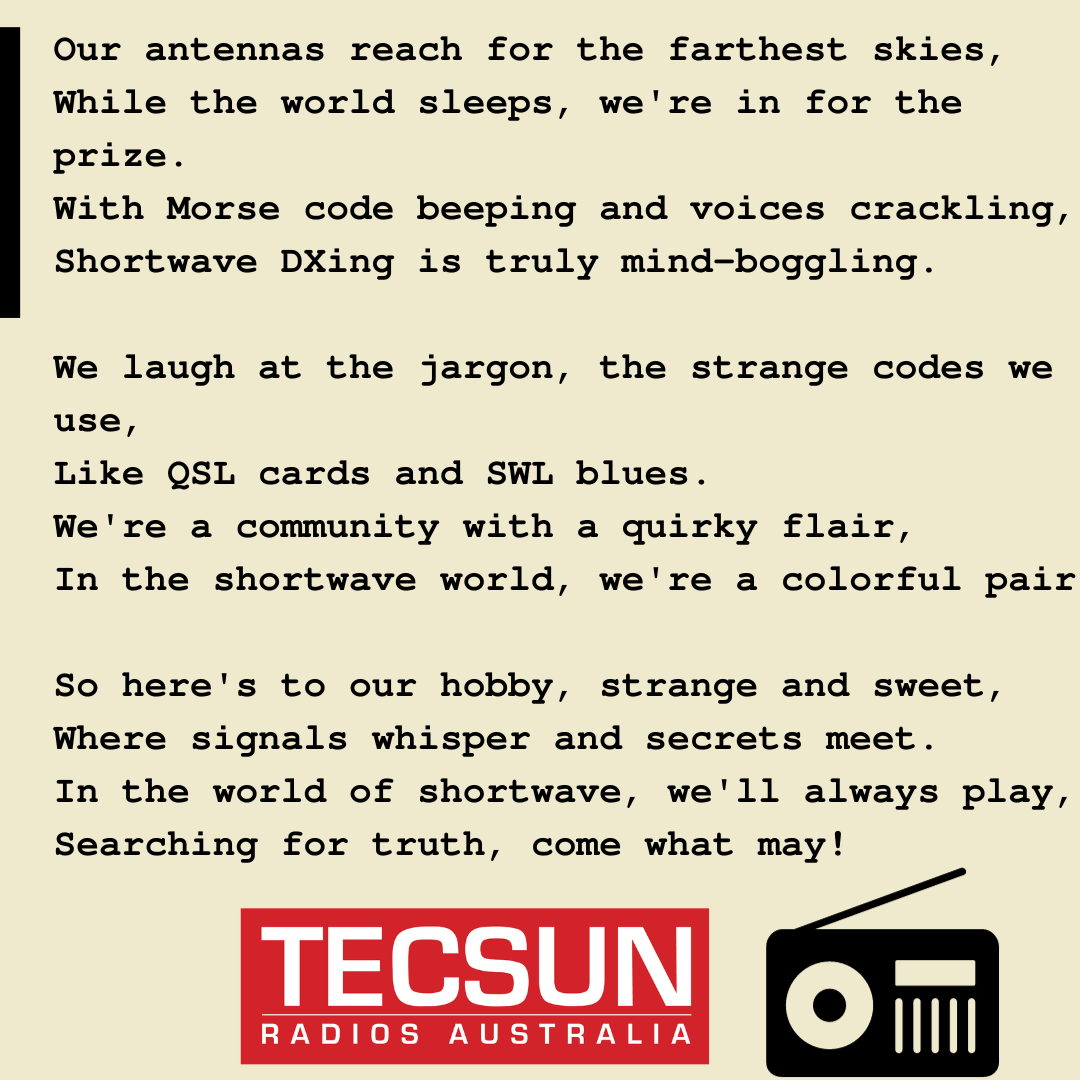
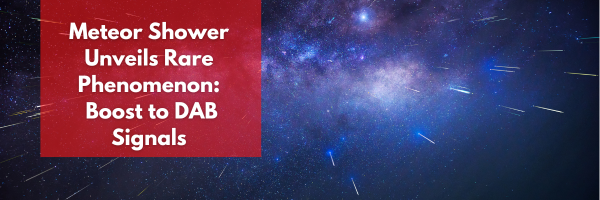
The night sky often looks incredible, but on the night of August 12, 2023, one Finnish DX (long-distance radio) enthusiast, Koe Kone, experienced an unexpected twist during the annual Perseids meteor shower. While gazing at the streaking meteors, Kone discovered a boost in German DAB (Digital Audio Broadcasting) signals, marking the first-ever documented instance of meteor-induced interference on VHF band III DAB signals.
Koe Kone, a dedicated DX hobbyist based in Turku, Finland, enjoys the challenge of seeking out distant broadcast signals. His YouTube channel showcases a treasure trove of recordings capturing broadcasts from across the Baltic Sea and beyond. However, it was during the meteor shower’s peak activity that Kone stumbled upon a radio phenomenon that had eluded detection until now.
The notion that atmospheric and celestial conditions can influence radio broadcasting is not a novel one. For decades, radio enthusiasts have observed the impact of meteor showers on radio signal propagation. Differences in the ionosphere between day and night have been known to affect the reach of AM signals, while temperature inversions in the troposphere can cause FM signals to ‘skip’ to distant markets.
As early as the 1930s, researchers recognised that meteor showers played a role in radio signal propagation. Enthusiasts and amateur radio operators have even used FM receivers to eavesdrop on meteor showers.
Kone’s groundbreaking discovery was made possible through his use of an Airspy Mini scanner and QIRX SDR software for signal reception. He paired these tools with a formidable 13-element VHF band III yagi antenna positioned at a lofty 48 meters above sea level. This setup allowed Kone to successfully receive and decode a signal emanating from a German multiplex operating in block 5C.
Intriguingly, Kone’s decoded stations led him to identify five potential transmission sources in Germany: Casekow, Pritzwalk, or Templin in Brandenburg; Röbel, Rostock, or Züssow in Mecklenburg–Vorpommern; and Garz on the picturesque island of Rügen, also situated in Mecklenburg–Vorpommern. Astonishingly, the closest of these sites is approximately 800 kilometers (nearly 500 miles) away from Kone’s reception site in southwestern Finland.
During the peak of his listening experience on August 12, Kone’s receiver displayed three adjacent DAB multiplexes on blocks 5B, 5C, and 5D. Although he couldn’t decode all the signals, he did capture brief bursts from blocks 5C and 5D in the early hours of August 11.
Sharing his discovery with the “DAB/DAB+ Digital & Online Radio” Facebook group, Kone reflected on his past successes in capturing Swedish DAB stations. However, the meteor shower recording was different. He noted, “This in the video was quite different, being a meteor scatter and lasted only a few seconds.”
Koe Kone’s discovery serves as a testament to the wonders that can be unveiled when technology, passion, and the mysteries of the cosmos converge. The meteor-induced boost to DAB signals not only adds a new layer of intrigue to the world of DX enthusiasts but also reminds us of the possibilities to discover. As we continue to explore the radio spectrum, who knows what other cosmic secrets may await discovery in the silent spaces between the stars?

In a world dominated by modern technology and instant communication, there exists a unique and passionate community of shortwave radio enthusiasts who find their thrill in tuning into aviation broadcasts. While it might seem like an esoteric hobby, listening to aviation broadcasts over shortwave radio has cultivated a cult following
Here are some of the reasons so many listeners follow the HF aircraft band.
Kind of like a global adventure!
Shortwave radio allows enthusiasts to embark on a global adventure from the comfort of their homes. Aviation broadcasts provide a portal into the skies, enabling listeners to eavesdrop on conversations between pilots and air traffic controllers from all corners of the world.
The sense of adventure and the opportunity to virtually traverse continents is a compelling reason why shortwave radio enthusiasts are drawn to aviation broadcasts
Shortwave radio provides real-time access to aviation communications. Enthusiasts can listen in on air traffic control exchanges, weather information, flight paths, and even emergency communications as they happen.
It is quite technical!!
Fine-tuning shortwave radios and antennas to receive clear aviation signals is a technical challenge that appeals to hobbyists. It requires skill and patience to optimise reception and achieve the best audio quality.
The technical aspect of the hobby fosters a sense of accomplishment and expertise, further deepening the enthusiast’s connection to shortwave radio.
Amateurs listening in during an emergency have saved the day in the past, both in the air and by sea!!
Shortwave radio is a reliable means of communication during emergencies. Aviation enthusiasts play a vital role in monitoring aviation frequencies during critical situations, potentially assisting authorities or providing essential information.
This sense of responsibility adds a noble dimension to the hobby, reinforcing the dedication of shortwave radio enthusiasts.
There is quite a community too!!
While shortwave radio listening can be a solitary activity, it also nurtures a strong sense of community. Enthusiasts connect through online forums, clubs, and social media groups, where they share their experiences, knowledge, and tips.
The sense of camaraderie among like-minded individuals contributes significantly to the cult following of this hobby.
For some, listening to aviation broadcasts on shortwave radio is a tradition passed down through generations. The nostalgic element, combined with the heritage of the hobby, creates a sense of continuity and connection to the past.
Listening to aviation broadcasts over shortwave radio may seem like a niche hobby, but it offers a world of adventure, technical challenges, and a close-knit community that has earned it a dedicated cult following.
Vast areas of the world lack the necessary local VHF radio communication systems needed to provide reliable radio coverage between aircrews and air traffic controllers. The lack of VHF coverage within most of these areas is due to the very remote location of these regions, for example, much of the airspace over the Atlantic and Pacific oceans lacks VHF communications as it is impossible to install transmitters on a reliable platform within these regions. As a result, a network of shortwave (HF) frequencies have been allocated to provide long range voice communications between aircrews and ATC facilities.
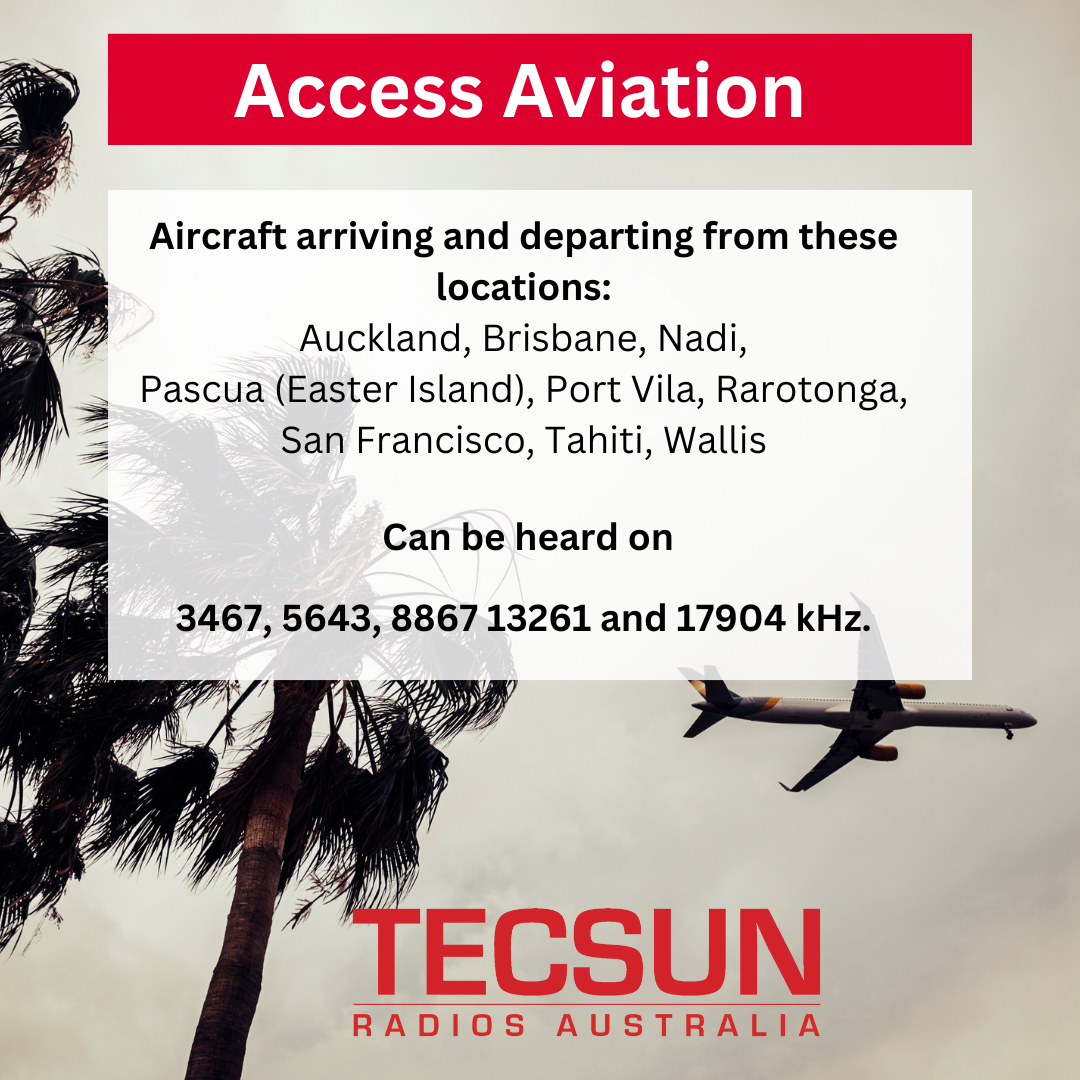 The allure lies in the ability to bridge the gap between the terrestrial and the celestial, allowing enthusiasts to soar through the skies without ever leaving their homes. So, whether you’re a seasoned shortwave radio enthusiast or a curious newcomer, consider giving aviation broadcasts a try – you might just find yourself captivated by the mesmerising world of shortwave radio and its passionate following.
The allure lies in the ability to bridge the gap between the terrestrial and the celestial, allowing enthusiasts to soar through the skies without ever leaving their homes. So, whether you’re a seasoned shortwave radio enthusiast or a curious newcomer, consider giving aviation broadcasts a try – you might just find yourself captivated by the mesmerising world of shortwave radio and its passionate following.
Here at Tecsun Radios Australia we have the best range of radios to support your shortwave listening adventures, we even supply a comprehensive shortwave listening guide, written by owner and fellow enthusiast, Garry himself!!!
Curious about listening to Aviation broadcasts, here are some of our top radios for the job.
PL-880, PL-990x, H-501x, PL-330, PL-365, PL-368, PL-660, S-2000. Most receivers in the Tecsun Radios Australia range have the ability to receive single sideband (SSB) transmissions, and that is the mode used by aircraft on the HF bands. As you can see, even the most economical receiver (PL-365) is capable of listening to aircraft on the HF bands.


